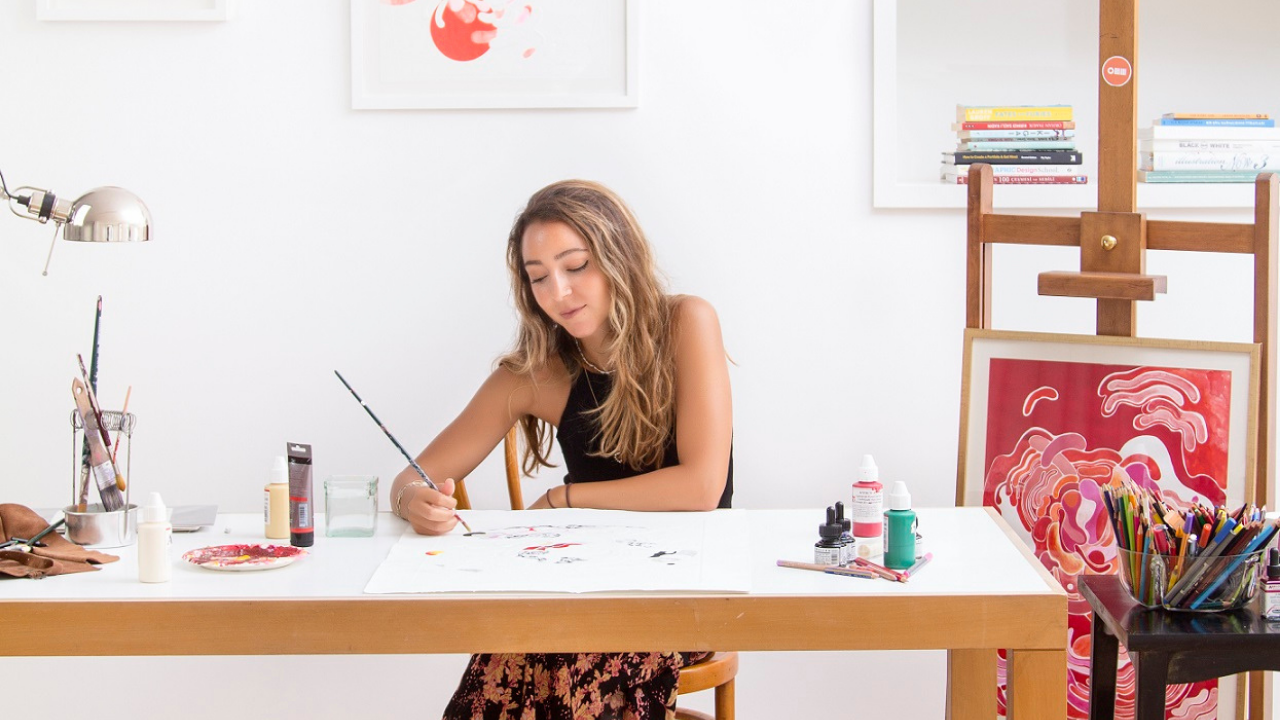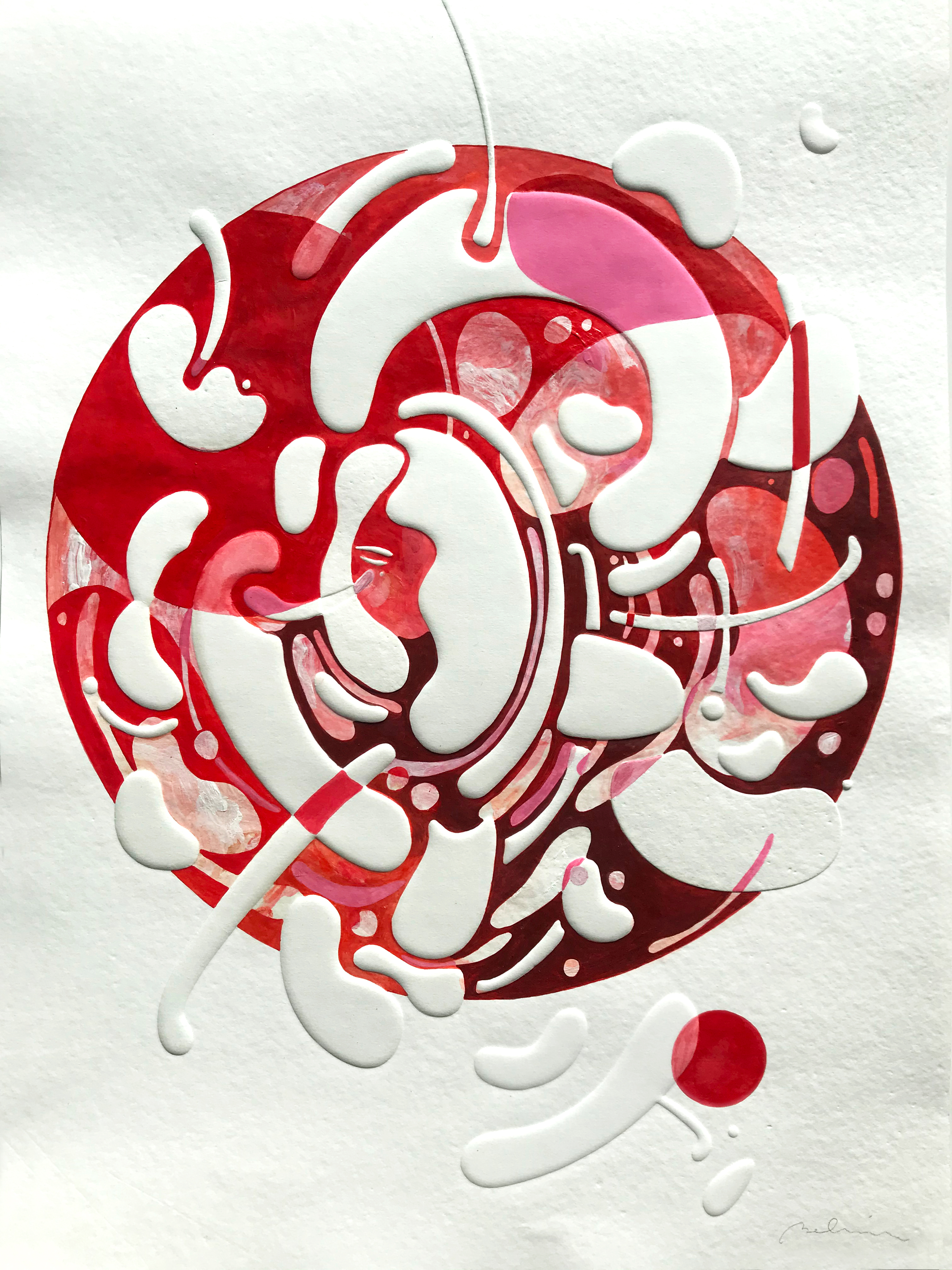
Emotional landscapes are dense, undulating, and – above all – abstract. Belmin Pilevneli is able to express hers and help us connect with ours through her artwork. Pilevneli is a Turkish visual artist and illustrator based in London, whose work has appeared in places like Soho House Istanbul, the House of Illustration in London, and the Press Museum in Istanbul. With her abstract forms on embossed paper she invites us to reconnect with our inner selves and reflect on the most pressing issues of today. We had the pleasure of sitting down with Pilevneli to talk about her creative process, what she hopes to accomplish with her work, and the ideas that underpin her pieces.
You studied art in college, but when did you first take an interest in the process of making art?
It actually happened when I was a child. I come from a family of artists, my Mother and my Father are ceramic artists, whilst my Grandfather is a well-known painter in Turkey. So I think I was given coloured crayons and pencils when I was around two and a half years old. This was where my interest in the process of making art began.
You often explore intense emotions within your work. What do you hope people feel while viewing your pieces?
My intention is to make people really feel, while it is easy not to feel anything or sympathetic towards others in this contemporary life based on ambitions and consumption. Most importantly I want people to remember those pure feelings we used to feel more easily when we were kids: the feeling of pure love, variations of love or jealousy, sadness, happiness, anger… I want them to remember how pure it was to feel something. For example, with the use of blind embossing on paper my aim is to convey this purity, a sense of the untouched, like a child loves their mother. When I add colors it is to convey different emotions, which can be far from innocent. When I add different patterns it means there are new perspectives, cultural viewpoints and engaged lives, etc. I want people to remember their essence and see and feel the variety of different lives and emotions, so that they could be more sympathetic to each other or to nature.

The poetry and patterns within your art complement each other well. How did you decide to combine the two? What do you hope to achieve by combining them?
I don’t consider myself a poet and I don’t always combine poetry and paintings, but I write poems to express my emotions. It comes from my need to express my intense feelings through written words, when the feelings are too much to cope with and it gets harder to find someone to talk to about them. Sometimes they can be very intimate feelings. So I write naturally, just to express myself. When I make my art it is with the same intentions and sometimes I combine the two. When I exhibit them together they make more sense, the text compliments my paintings which are usually abstract. There are times when I illustrate master poets’ poems too, because sometimes it makes you feel more clear about your own feelings and even satisfied when you read someone else’s emotions expressed.
“I want people to remember those pure feelings we used to feel more easily when we were kids.”
You’ve noted how your work is a conversation between the past and present. What do you think is the most important message from the past that we can learn from today?
Sometimes my works do highlight the past or act as a bridge between the past and present. Because we can always learn from the past. Whilst the past teaches us, it can remind us about our own heritage and who we are too. There isn’t just one answer to this question, but I can tell that in the past we would spend more time on everything. We took our time to love someone, rather then ghosting them in two days, or learning a new hobby that could have the potential to be our lifetime hobby, or listening to a friend face to face, rather than getting distracted by notifications from our smartphones, or even designing a building or painting with our hands…. We weren’t rushing, but taking the time, so the message could be, “Don’t rush. Take your time.”
What kind of story are you looking to tell with your work?
The story is usually about me and emotions, or my observation on others’ emotions and the way they are expressed. Altough, the story has different chapters. In the past it was more about interpersonal relationships, while now I’m mostly concerned about the climate crisis. So the new chapter tells a story on the natural resources we are loosing and the climate change that is threatening our kids’ future. These series will highlight a story more from a potential future, rather than the past, which will be exhibiting in my 3rd solo show in April 2022 in Istanbul, Turkey at Galeri Fe. So who knows what happens in the next chapter…
Discover more of Belmin Pilevneli’s work on her website.








